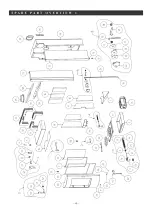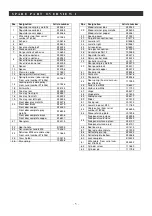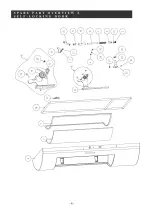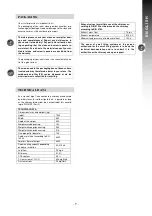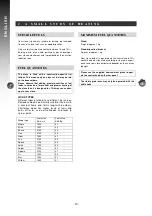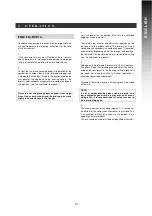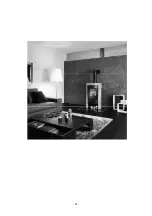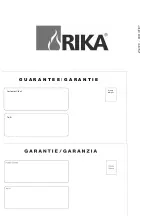
- 13 -
E
N
G
L
IS
H
Facing the challenges of our times means assuming re-
sponsibility. Maintaining our natural world is now one of
our most important tasks. Our products represent devel-
opments according to the state of the art. This is the main
precondition for clean, efficient and problem-free working
of our stoves.
CLEAN BURNING
Clean combustion requires:
1. DRY AND UNTREATED FIREWOOD.
Guideline between 14 % and 18 % relative wood moisture.
Wood stored dry and ventilated for 2 – 3 years.
A stove is not a waste incinerator. The warranty lapses
if waste or non-approved materials such as plastic,
treated wood etc. are burnt!
This leads to damage to the stove and chimney and
environmental pollution!
2. THE RIGHT QUANTITY OF FIREWOOD
AND FIREWOOD DIMENSIONS
- Too much firewood leads to overheating.
This stresses the material too much and leads to poor flue
gas values.
- Too little firewood or logs being too large means the
stove does not reach optimum operating temperature.
The flue gas values are also poor in this case.
- The right quantity of firewood is:
For wood
≈
2 kg (2 logs - 25 cm long) per layer (guideline)
for rated heating value.
For minimum thermal output
≈
1 kg (2 logs - 25 cm long)
Note: Only wood and wood briquettes may be burnt in
your stove. Plastics, treated wood (e.g. chipboard),
coal and textiles may not be burnt.
BURNING WOOD
The clean burning of wood represents the same chemical
process as natural rotting, i.e. the CO2 (carbon dioxide)
released does not additionally increase or burden the
original CO2 content in the atmosphere.
Plant growth
CO2 content of
atmosphere
Wood
Rotting or burning
Summary of Contents for FOX II
Page 1: ... 1 FOX II Instruction Manual ...
Page 2: ... 2 ...
Page 3: ... 3 D I M E N S I O N S Flue pipe connection with original angle pipe ...
Page 4: ......
Page 6: ......
Page 21: ... 21 ...
Page 22: ... 22 ...
Page 24: ... 24 Z34390 2011 07 07 G U A R A N T E E G A R A N T I E Customer Client To A Stamp Marque ...




